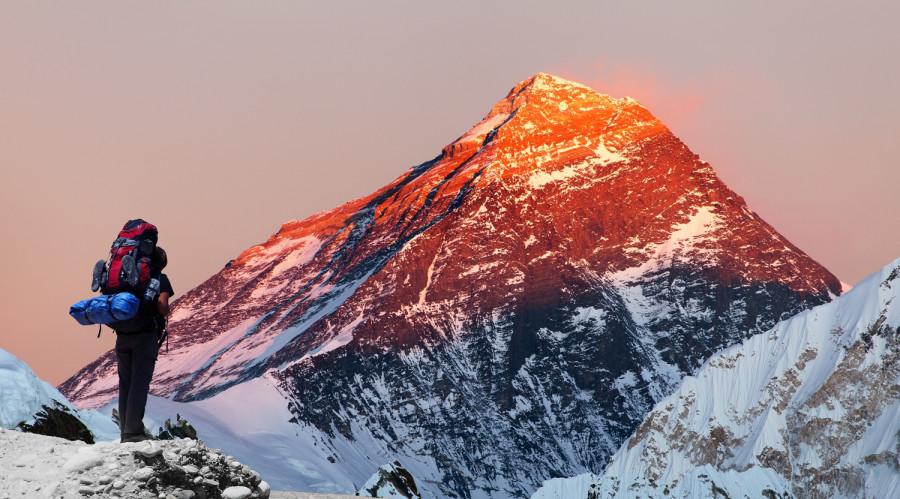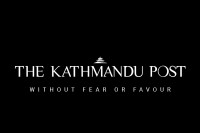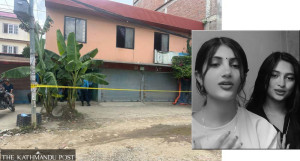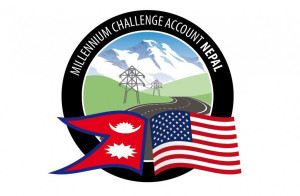National
With Everest expeditions cancelled, guides and porters could carry down trash and dead bodies
As Everest is free of climbers, this is an opportune moment to employ jobless sherpas and guides to haul trash and bodies off the mountain, mountaineers say.
Sangam Prasain
As all Everest expeditions for this spring season have officially been cancelled, mountaineers and the mountaineering association have both suggested that the government turn this upset into an opportunity.
As thousands of sherpas have been rendered jobless, the Nepal Mountaineering Association has suggested that they could be deployed to retrieve trash and dead bodies from the world’s highest mountain.
“It’s a golden opportunity for the government,” said Kami Rita Sherpa, the world record holder for climbing Everest 24 times. “The Everest cleanup campaign can employ at least 25 percent, or 3,000 climbing guides and porters, who have now lost their jobs.”
Every spring, bodies buried for decades pop out from under the melting snow, leading mountaineers to use them as markers. Nearly 300 mountaineers have died on Everest since the first ascent attempt and estimates suggest that two-thirds of the bodies are still buried in the snow and ice.
Record numbers of climbers crowding Everest also leave behind tonnes of litter, with the world’s highest peak acquiring notoriety as the “world's highest garbage dump”. Each camp on Everest is littered with depleted oxygen cylinders, food packaging and ropes.
Last year, climbers had retrieved four bodies and collected some 11 tonnes of garbage from the mountain in the first-ever cleanup drive launched by the government.
Sherpa estimated that an investment of around Rs1 billion for a three-month-long campaign, either from the government or corporate houses as part of their corporate social responsibility, could retrieve a maximum number of bodies as well as rubbish.
“A dead body recovery mission can even be launched above the Death Zone,” he said.
The Death Zone is Everest’s highest part, everything above 8,000 meters.
Removing bodies from higher camps is expensive and difficult because of the danger from the rarefied atmosphere. According to mountaineering officials, it may cost $20,000 to $200,000 to bring down a dead body from extreme points.
Most climbers’ bodies are left behind on Everest every year as it is too costly and difficult to bring them down. Last year, nine people climbing from the Nepal side died on the mountain, the highest number of deaths in the past four years. Two people died on the Chinese side of the mountain.
“We cannot predict how many bodies can be recovered but as there won’t be any pressure to wait for the climbing weather window for high altitude experts, this kind of opportunity will be available rarely in the future,” Sherpa told the Post.
Every year, hundreds of climbers, sherpas and high-altitude porters make their way to Everest, leaving behind tonnes of both biodegradable and non-biodegradable waste, including empty oxygen canisters, kitchen waste, beer bottles and faecal matter.
A high-level coordination committee, led by Deputy Prime Minister Ishwar Pokhrel, during a meeting last Thursday decided to suspend climbing permits for spring expeditions on Mt Everest and other mountains due to the coronavirus that has spread to more than 160 countries.
Santa Bir Lama, president of the Nepal Mountaineering Association, said they have requested the committee to utilise this opportunity.
“We have told the committee that Everest can still create jobs and there is no need to launch subsidies and other packages,” said Lama. “Deputy Prime Minister Pokhrel appears convinced by our proposal but we are waiting for the government’s response.”
Sherpa suggested that the budget allocated for the promotion of the Visit Nepal 2020 campaign, which has been temporarily halted, can be channelled towards the Everest cleanup campaign.
The government on Thursday also temporarily stopped issuing on-arrival tourist visas to all countries and on Sunday, the Tourism Department decided to suspend the issuance of trekking permits to restricted areas until April 30 for foreigners.
The cancellation of visas and mountaineering expeditions is expected to put around 20,000 tour, trekking and mountain guides out of job.
The hardest-hit sector is Everest, where an entire economy, consisting of climbing guides, porters, hotels and lodges, subsists on spring mountaineering. By the end of the season, hardworking climbing guides generally make around $8,000.
The federal government too makes millions every year in climbing permits. Foreigners pay $11,000 to obtain a permit and spend anywhere between $40,000 and $90,000 to climb Everest. The Department of Tourism collects around $4 million annually in royalties from Everest climbing permits.
Statistics from the Tourism Ministry show there are 16,248 trekking and mountaineering guides and 4,126 tour guides in the country. Since New Zealander Edmund Hillary and Nepali Tenzing Norgay first climbed Everest in 1953, more than 6,000 people have reached the summit.




 21.83°C Kathmandu
21.83°C Kathmandu















